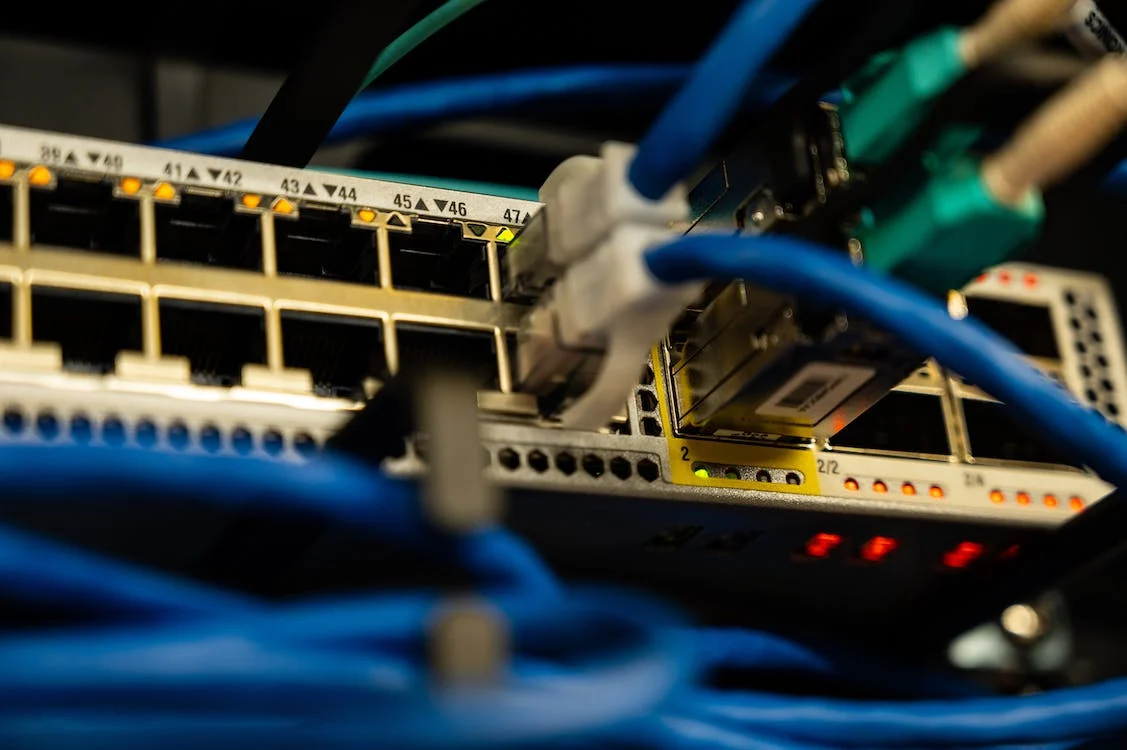On a local network, there are multiple users transmitting data back and forth. To ensure that the data is transmitted without any loss, CSMA/CD helps regulate the entire procedure. It is a protocol which ensures the organization of the data transmission process over a local Ethernet network and is not relevant for WLAN users.
CSMA/CD is an acronym for Carrier Sense Multiple Access with Collision Detection. Let’s break it down to be able to understand it better:
- Carrier Sense (CS) refers to nodes detecting to make sure that the medium of data transmission is free prior to transfer
- Multiple Access (MA) refers to several nodes accessing the same network media
- Collision Detection (CD) refers to an extension of the original protocol and defines what happens when two nodes attempt a transmission simultaneously
- Collision Domain is the portion of a network in which collision can occur
How does CSMA/CD work?
The CSMA/CD process takes place in multiple steps. It goes similar to a normal human conversation where one person speaks, and when they are done communicating, another person proceeds to speak. If multiple people were to speak at once, neither would be able to communicate effectively and information transfer would be impossible.
Similarly, in the CSMA/CD process, the station listens into the activity on the medium. While the medium is busy, the protocol will not proceed. Once the station detects that the medium is unoccupied, it will attempt to transmit the data. If no other station attempts to transmit data during the same time frame, the process will be successful.
However, while monitoring the medium, it is detected that a collision has taken place because another participant attempted to transmit data, the station will halt the transmission immediately. Following this, the station sends out an interference signal to alert other stations of the transmission. After waiting for a random time period known as “backoff”, the station attempts to transmit the data again. Since the backoff applied by both stations is random before attempting to transmit data again, the chances of another collision taking place are relatively low.
Factors affecting Collisions
The size of the network greatly influences the frequency of collisions that take place on it. This refers to both the number of participants on a network and also how long transmission paths are. If data transmission takes longer to detect by the receiving participant, it creates confusion on the medium and also slows down the network.
Collision Domain – what does it do?
A collision domain, as mentioned earlier, is the portion of a network in which a collision can occur. This is a shared transmission medium of a limited size to maintain the effectiveness of the collision procedure. If it is too large, the transmission speed becomes slower due to the amount of distance it has to cover.
It is important that all participants are alerted of a data transmission error in the collision domain if a collision occurs. What this means is that the first station needs to be signaled regarding the error in data transmission before it marks the transmission as successful. If the station is not alerted early enough, it will mark the transmission as a success, and this will result in data loss. Such an occurrence is referred to as a late collision.
Can you prevent collisions?
Collisions cannot be prevented entirely, however the CSMA/CD protocol does significantly reduce their occurrence and also manages collisions to prevent data loss. The frequency of collisions can also be drastically reduced by forming smaller collision domains. This is because the increasing number of participants on one domain reduces the effectiveness and speed of signal transmission. A simple solution to this problem is to just split up the network using switches or bridges.
Does CSMA/CD work on wireless networks?
CSMA/CD doesn’t work well for wireless networks due to presence of hidden stations. Stations may not be able to identify each other while communicating at the same time with a third station. This leads to chaos and inevitably data collision. In this scenario, CSMA/CA is a more appropriate protocol which can be used in the case of wireless transmissions.
Conclusion
Even though CSMA/CD might be seen as an older protocol keeping in mind the advancements in cable technology, it is still a good idea to be knowledgeable regarding how it functions and its limitations. Those looking to reduce the collision domain size can do so by installing ornetwork bridges and other networking devices. Unlike repeaters that broadcast all kinds of packets, LANs with this deployment are able to forward packets based on their Mac (Media Access Protocol) addresses.

